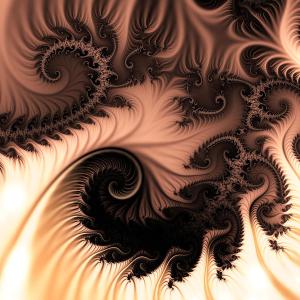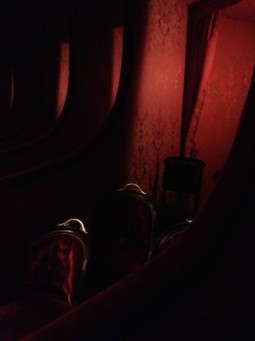
Photo: Lisa Rochon at chasinghome.org.
Close your eyes and imagine Paris at Christmas. It’s after midnight. In the shadow of Sacre Coeur, nestled in a warren of small streets, there is a small, private, members-only theater. It glows like a ruby jewel, decorated in velvet in shades of blood-red and black. A dry smoke lingers in the air, and cranberry mulled wine flows like a river. A buffet is set discreetly to the side, laden with Ruby red port wine, stewed plum compote, tart cherries in burgundy claret, and dark, bitter chocolate. The theatre special is a balsamic vinegar reduction, infused with butter, cranberries, plums, chocolate, smoke, and tobacco. Men in masks like Casanova sit hidden in velvet alcoves, eating spiced cranberry cake, smoking, or smearing their lovers’ skin with the chocolate-cherry balsamic glaze. When morning comes, the theatre becomes darker, the velvet curtains change to brown, the wine dries up, and all that is left is a dry, sweet woodiness. Welcome to the world of Zahd.
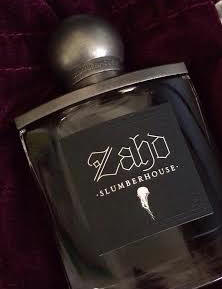
Photo by Catherine at @strawbeemochi, Twitter. Used with grateful thanks.
Zahd is the newest creation from Josh Lobb at Slumberhouse, the Portland indie perfume house. Zahd is a parfum extrait that was just released in limited quantities. Only 125 bottles were made, all of which were offered for pre-order back in Fall 2013. Such is the popularity of both Slumberhouse and Mr. Lobb himself that Zahd sold out in a mere 24 hours. The perfume was shipped out about 10 days ago, and one of my close friends, Kevin, was kind enough to share a sample with me.
Zahd is a lot more nuanced and complex than it initially appears from the outside where it deluges the wearer in the darkened delights of a semi-sweet, semi-dry cranberry molasses. I’d actually argue that it is the most subtle, well-balanced, and carefully modulated of all the Slumberhouse scents that I have tried thus far. Some of them have always been a little heavy-handed, shall we say, in their bold intensity and concentrated focus. (Perhaps I’m still recuperating from the drydown of Sova Extrait….) Zahd is different. It feels like the incredibly talented Josh Lobb is honing his talents, and learning to appreciate the effects of a more nuanced, subtle approach, while still maintaining the Slumberhouse signature of concentrated richness. The result is a fragrance that may actually be the easiest Slumberhouse to wear, if not the best Slumberhouse to date.

Source: ebay.co.uk
As a limited edition fragrance that is now sold out, Zahd isn’t mentioned on the Slumberhouse website, but Mr. Lobb provided CaFleureBon with a wonderfully detailed analysis of the perfume, his inspiration, and even a poem he wrote on the feelings that it is meant to capture. The long piece is worth reading, but I’ll only quote Mr. Lobb’s description of the perfume and why the cost of its ingredients meant it could only be done as a one-time deal:
As I began creating the formula for Zahd, I realized I was subconsciously sculpting the scent to replicate how I felt crushed red velvet would smell if a fabric could be transformed into scent. I wanted something lush, opulent, alluring, completely gender neutral and ultimately mysterious. From this point I began incorporating other ideas involving heavier elements from traditional middle eastern perfumery to add both weight and complexity. Over the course of these two years I created roughly 80 prototypes of Zahd in my attempts to fine tune the fragrance to the smoothest, most rounded and perfected version of itself. In curating my materials palette, I realized that the addition of lotus, mysore sandalwood and an attar I commissioned specifically for Zahd had bumped this fragrance into not only the realm of excessive cost but also into being nearly impossible to replicate. Realizing that this would be a special release that I would only be able to offer in such a limited amount, it only made sense to offer Zahd for this occasion.
According to Mr. Lobb, Zahd incorporates notes of:
cranberry, champaca flower, benzoin, plum, pink lotus, fir, cocoa, tolu balsam, gromwell, wine ether, mysore sandalwood, cherry, incense and oak to create a dark, velvety berry scent. The perfume itself is a deep ruby red color and is concentrated at 30% to create an incredibly powerful and long lasting extrait.

Source: Pbs.org
Zahd opens on my skin with thick wave of cranberries covered with spices that smell like cloves and cinnamon. The tart, sweet, spiced fruits are thoroughly immersed in plum molasses that has a definite liqueured undertone, one that extends far beyond mere wine and into Ruby red port territory. It’s dense, velvety, and a little bit treacly in feel. Subtle flickers of a dark, bitter chocolate lurk at the edges, along with smoky undertones, though they don’t smell like frankincense. The overall bouquet is of concentrated cranberries with plums, dark port liqueur, and spices, all shot through with a vein of darkness.
There are other elements hovering in the distance. There is the subtlest suggestion of something vaguely floral that momentarily pops up its head in the opening 15 minutes, though it is indistinct and muted. It doesn’t smell like champaca to me, and I honestly can’t place it, though it doesn’t matter much as the note is very short-lived in nature. Much more noticeable is a different sort of fruited undertone. Deep in the base are cherries, accompanied by tobacco and what feels almost like a leathered apricot. I know tobacco isn’t mentioned in Zahd’s list of notes, but something definitely creates the smell of Tobacco Absolute for me, particularly later on in the perfume’s development.
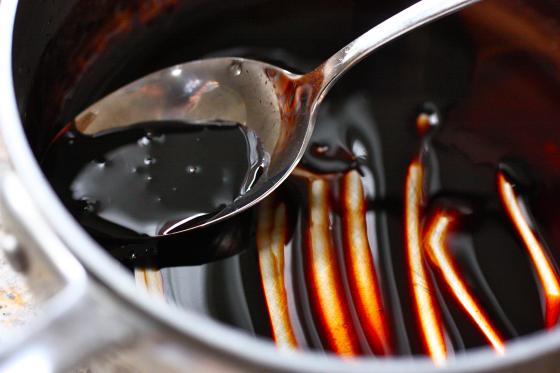
Balsamic vinegar reduction. Photo: Jenna at Eat, Live, Run. EatliveRun.com. (Website link embedded within.)
One of my favorite parts of Zahd is the strong undercurrent of something darkly balsamic in the base. For once, I don’t mean “balsamic” in the sense of a dark, thick resin. No, I mean something that is like actual balsamic vinegar that has been reduced down (with a ton of butter) to make a dense sort of glaze or demi-glace. It smells like sour cherries and chocolate, while still retaining a lingering trace of something wine-like. (If you haven’t tried a balsamic reduction, I highly recommend it. It works beautifully with everything from filet mignon and duck to fruit, especially strawberries.)

Trisamber, via IFF.
My least favorite part of Zahd is something aromachemical in the base. The first time I wore the perfume, I applied only a little bit of the burgundy juice, and the primary bouquet was of heavily spiced cranberries with an incredibly powerful, super arid, woody synthetic. It was very difficult for me, so I contacted Josh Lobb on Twitter to ask if Zahd contained any aromachemicals. Mr. Lobb was extremely gracious, and courteously walked me through Zahd’s other elements. He quickly determined that the troublesome nuances I was describing had to be something he called “Trisamber” which turns out to be an IFF creation with a very woody, dry, somewhat ambered aroma profile.
You may find Mr. Lobb’s Twitter discussion of the aromachemical interesting, as it also helps to underscore that Zahd’s core is about darkness, not sweetness:
https://twitter.com/slumberhouse/status/439494550290460674
https://twitter.com/slumberhouse/status/439496671643594753
Mr. Lobb also added:
- The trisamber is an interesting note, to me it smells like blackness, like someone turned the lights off, a bit mysterious
- I definitely see it as a divisive scent. Without trisamber Zahd leaned a bit too gourmand for my liking
I was extremely touched by how he took the time to so courteously and patiently explain Trisamber to me, as well as by his understanding for my particular sensitivity. I know most people have no problems whatsoever with aromachemicals, but my nose is really finely attuned to them, and a few are really difficult for me to bear when they are extremely desiccated in nature.
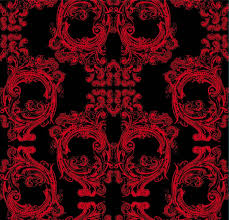
Source: designerwallcoverings.com
The thing that is interesting about the Trisamber is that it really was not as profound an issue when I applied a lot of Zahd. In my main test, I used 3 times more perfume, a little over half a 1 ml vial but less than 2/3rd, and fully expected the aromachemical to be worse. I was shocked to find it was better. Much better.
Oddly enough, the greater quantity seemed to downplay the harsh aridity, probably because it allows Zahd’s other elements to shine more brightly. As a result, the Trisamber doesn’t feel like a wave of dryness that hits you in heavy amounts from the first sniff. Instead, it slowly seeps out after about 15 minutes, and, even then, it is very well-blended within the overall bouquet, appearing mostly as a very subtle dry darkness that wafts about. It is remains an arid note (though not so much as the Norlimbanol that I’ve encountered in the past), woody, and faintly ambered, but it is counterbalanced by the other elements. Still, the Trisamber feels very jangly at times and, I have to admit, it gives me a small twinge in the head whenever I smell Zahd up close for too long a period of time.
Despite all that, I really like the dark touch that Zahd exudes. Mr. Lobb is undoubtedly correct that, without the Trisamber and the other darker touches, Zahd would have skewed too gourmand in nature. They cut through the sweetness, provide a balance, and ensure that the perfume never veers into diabetic territory. Yet, I think the dark foundation does much more than just that; I think it actually makes the perfume. It’s not merely the Trisamber, but also the liqueured, balsamic, cherry-and-dark-chocolate tonalities, mixed with that subtle suggestion of something smoky. Mr. Lobb thought of crushed velvet curtains, and he does succeed in creating that visual. He also goes beyond, to conjure up that cozy jewel-box of a theatre with dark shadows, that mystery he referred to in his discussion of Trisamber. The overall effect is to make Zahd very much of a mood fragrance for me, a mood that goes beyond the expected holiday smell of simple spiced cranberries.
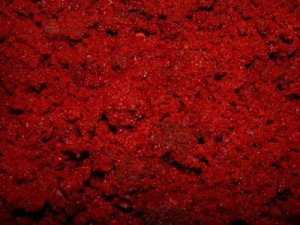
Source: This Girl Can blogspot, lkng.wordpress.com.
At the end of 30 minutes, Zahd slowly starts to shift. The black chocolate becomes more noticeable, and is accompanied by a tobacco accord that feels a little leathery. The darkness is further underscored by a greater sense of smokiness, though it never smells like incense to me. Rather, it’s more akin to burning leaves in the fall.
As a whole, Zahd is extremely potent up close, with initially huge sillage that fools you into thinking that the perfume is very dense in weight. As it wafts about 4 inches around you, the liqueured and molasses accords make you imagine something as chewy as a red velvet cake. Yet, the sillage drops after 40 minutes to about 2-3 inches, and the perfume continues to soften with time. Zahd actually ends up feeling almost delicate and light, despite its richness and the density of its notes. To borrow the term of one of my readers, Tim, it has “weightless heaviness” at the end of the first hour.

Source: primermagazine.com
I thoroughly enjoyed Zahd opening the 2nd time around, especially as the greater dosage amplified the perfume’s velvety richness. The Trisamber was not as dominant, and the overall bouquet was really pretty. I love how Zahd replicates the smell of a very expensive port wine, only made from cranberries, plums, and cherries instead of the usual grapes. I’m a sucker for port, both the Ruby and Tawny varieties, especially when served with chocolate, so the overall combination is really a hit for me. (It also makes me wonder if Mr. Lobb is a secret foodie.)
Zahd has sweetness, yes, but it is very carefully calibrated sweetness that is kept fully in check by the darker, drier elements. The subtle suggestions of tartness and of oaked woodiness also help. Those of you who are phobic about fruit scents, let me reassure you that Zahd is not some commercial fruit cocktail with diabetic syrup. It is instead a very deep, rich scent whose spiced cranberry focus is dominated by shades of burgundy and black. Speaking of which, the colour of the juice is beautiful with its mulled wine resemblance. It is also the reason why I must warn you not to wear white or light-coloured clothing if you plan on spraying on Zahd. The fragrance stained my skin to a port wine shade that remained for hours. While I love the colour in general, I imagine it would be quite difficult to get out of clothing.

Image: Dejainnightmare via imgarcade.com
The Trisamber aromachemical grows more dominant by the start of the 3rd hour, thoroughly infusing its dark dryness into the cranberry-plum cocktail. It’s a hard note to describe in-depth, but its power feels steely, hard, and jangly, almost like an abrasive roughness that is quite textural in feel. It sets up a dichotomy where you have the velvety plushness of the spiced fruit, port, and balsamic reduction accords, on the one hand, and something that is drier, tougher, and not as smooth, on the other. The contrasts make Zahd feel like some sort of avant-garde, modernist take on fruitiness that completely up-ends its usual characteristics in commercial perfumery.
Zahd is rather linear in nature, and doesn’t shift twist or turn in a massive way throughout its lifespan. Initially, all that happens is that the perfume softens even further, turning into a blur of dry-sweet port wine that hovers about 1-2 inches above the skin at the end of the 3rd hour. But slowly, very incrementally, Zahd turns drier and woodier. Over the next few hours, the plummy base feels as though it’s becoming darker and more resinous. On my skin, the cherry and plum actually seem to overtake the cranberry. As the spiced note weakens, the Trisamber woodiness increases. Zahd feels like a liquid that has evaporated to an even deeper concentration, devoid of the extra frills and embellishments. Yet, it is very soft in feel. And, about 4.75 hours into its development, it turns into a skin scent.

“Kaiser Prime Nebula” by Nethskie at nethskie.deviantart.com. http://nethskie.deviantart.com/art/Kaiser-Prime-Nebula-177426428
The notes continue to realign themselves in fractional degrees. At the start of the 7th hour, there is as much of a dry, tobacco-like aroma as there is plum. The aroma is dark, vaguely dirty and earthy, and feels almost like raw tobacco juice that has been stewed. The cranberry now feels even more muted than before. Even the balsamic, cherry glaze feels weaker, not to mention thinner and milder. The Trisamber’s dryness and darkness remains throughout, adding to Zahd’s woody feel. At the same time, a dark golden touch appears. It doesn’t feel like amber so much as an abstract, very dry… well, goldenness. That’s about the best I can do to describe it.
As a whole, Zahd smells of dark, fruited sweetness with dry woods and darkness. You can still detect the spiced cranberry if you sniff hard, though my skin seems to emphasize the plum, but the fruited elements feel increasingly abstract. So do the dry elements, which can’t really be singled out as oak, tolu balsam, or even Trisamber in any hugely distinctive, individual way. The perfume is really well-blended, and coats the skin like a rich but gauzy coating. Zahd continues in that vein for a few more hours until it finally fades away as a mix of dry sweetness. All in all, Zahd lasted just under 15 hours on my skin with the large dose (a little more than 1/2 of a 1 ml vial, or about 2 good sprays), and about 10.75 hours with 2 small smears.

Source: droiddnaforum.com
As I stated earlier, I find Zahd to be the most wearable of Slumberhouse’s fragrances that I’ve tried thus far. I wasn’t hugely impressed by it in my first go-around, primarily because of the way that the Trisamber was such a huge part of the scent, but I have a particular issue with aromachemicals that others don’t have. (Lucky devils.) The more important point, though, is that Zahd unfurled its subtle nuances and layers when I applied more of it, which is something you may want to keep in mind. For whatever reason, it was generally just a simple, spiced cranberry fragrance with aromachemical dryness when I used only a small amount. The lovely plum, dark chocolate, port, balsamic cherry glaze, burnt leaves, and that inexplicable tobacco tonality all shone through with the larger dosage.
Zahd feels firmly unisex to me, and it seems like something that both men and women would enjoy. I don’t know how versatile it may be for daily use, but then, Zahd is very much of a mood fragrance, in my opinion.
I think it’s rather a shame that Zahd is a limited-edition scent. I really think it is one of the best Slumberhouse creations to date, and seems to really reflect Mr. Lobb’s personal evolution as a perfumer. I’ve said repeatedly that he has enormous talent, and that I both admire him and respect him. It’s really hard to believe that he is wholly self-taught, because he’s very good at this. He is also someone who is driven by a genuine passion to make perfumes that are outside the box, something that I always think should be applauded. On top of it all, in his interviews and interactions with others, he always comes across like a really nice guy. All of that is why I’ve always wanted to love his fragrances but, alas, none of them have suited me personally.
The primary reason is that many of them felt a little over the top with their monolithic, untrammeled intensity. (I haven’t tried Norne, which I suspect would fit my tastes much better, but I’ve tested 5 Slumberhouse fragrances thus far.) I think the best example of my point would be Sova Extrait, which I haven’t officially reviewed because it was pulled from the line soon after I bought my sample. Sova reflects something that I’ve experienced with a number of Slumberhouse fragrances, only taken to an extreme degree: a glorious, almost addictive start, but a development which just wears one down with an increasingly loud, bulldozer-ish quality and with such hyper-saturated richness that it becomes thoroughly exhausting.
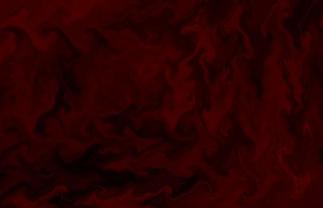
Source: hd4desktop.com
Zahd is none of those things. It still isn’t me, but this is a perfume that reflects a much more delicate touch. The Slumberhouse signature of rich boldness is still there, but it is more carefully calibrated. Even better, the richness doesn’t feel unctuous, oily, overwhelming, or cloying as it does in a few of the scents. (Pear + Olive, I’m staring at you.) You also don’t feel burnt out by linear heaviness, as though you’ve just ingested six rich cakes, when you merely asked for a single slice. (Ore, that one applies to you. How I could have loved you, if only you hadn’t force-fed me!) With Zahd, the Slumberhouse singular focus still remains, only now it is leavened with more complexity and more mature depth.
It’s as though Mr. Lobb has learned to simultaneously add more nuanced layers, while also editing himself. The best example of the latter would be the spiced nature of the cranberries in Zahd. The spices are a subtle undertone, not a full-on blast. In my review of Mr. Lobb’s Jeke, I talked about the overpowering nature of an accord made from spiced apple, mulled wine and potpourri-like elements. That spiced potpourri aroma could easily have happened here with Zahd as well, with just a different sort of fruit being the focal point. But it didn’t — thanks to very careful editing. Mr. Lobb’s growing maturity and confidence as a perfumer shows itself in the fact that he manages to express his signature voice or identity without having to resort to Rammstein-like levels of loudness.
I realise that Mr. Lobb has said it wouldn’t be cost-effective to put Zahd into general production, but I think admirers of his fragrances may want to beg him to reconsider. Perhaps he can price it a little higher than the $150 he charged for the 30 ml Extrait. I suspect really hardcore Slumberhouse fans would pay it gladly. It also seems rather a shame that those new to the line won’t get the chance to try Mr. Lobb at his best. All in all, I have to say, “Job well done!”
DETAILS:
Cost & Availability: Zahd is no longer in production. There was a one-time pre-order in Fall 2013 for only 125 bottles, each of which was 30 ml of pure parfum extrait which cost $150. Mr. Lobb sold out within 24 hours. He does not have any more bottles for sale, and does not have samples. There are also no sample sites which offer Zahd to test. I obtained my vial from an extremely thoughtful friend. Thank you, Kevin!























